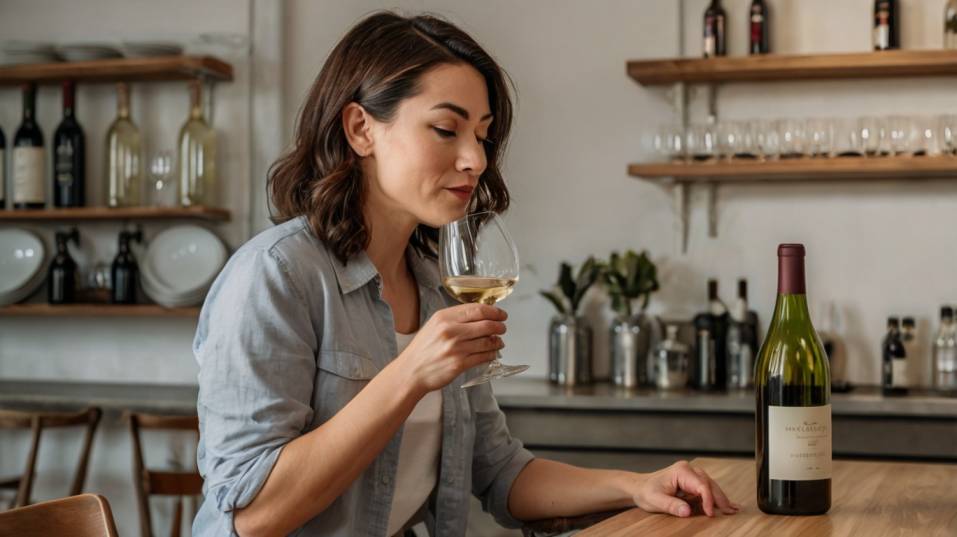Wine Legs Don’t Mean Higher Quality
Think wine legs reveal quality? Think again. Learn what actually matters when tasting—and how to trust your palate with confidence.

Ever stared at the streaks sliding down a wine glass and wondered if they mean something? You’re not alone. For many new wine drinkers, “legs” seem like a secret signal of quality.
But here’s the truth: they’re just science, not substance. If you're curious about wine and want to taste with confidence, it’s time to look past the glass and into what really matters—the flavors, structure, and story inside.
What Are Wine Legs—And Why Do People Talk About Them?
Wine legs, also called “tears of wine,” are the droplets that slowly form and slide down the inside of your glass after you swirl it.
They’ve been romanticized in tasting rooms and pop culture alike, often used as shorthand for richness or depth. But the phenomenon is simple science: alcohol evaporates more quickly than water.
As it does, surface tension builds on the wine’s thin film, causing gravity to pull the liquid down in streaks. That’s all it is—capillary action driven by alcohol content.
The thicker and slower the legs, the more alcohol (and sometimes sugar) is in the wine. That’s it. They don’t tell you if the wine is balanced.
They don’t tell you if the grapes were grown with care or if the winemaker handled them thoughtfully. They certainly don’t predict how the wine will taste or evolve in your glass.
Why the Obsession?
Because they’re visible. When you’re just starting out, it’s tempting to rely on what you can see. Legs feel like a tangible clue.
But wine is an experience that lives in your nose and mouth, not your eyes. Learning to trust your palate is more useful than memorizing visual quirks.

Understanding What Legs Can Tell You
To be fair, wine legs aren’t completely meaningless—they just get misused. Legs can give you a rough indication of body and alcohol level.
A wine with 13.5%–15% ABV will often show slower, more pronounced legs than a crisp 11% white. A dessert wine with high sugar content may show syrupy streaks that linger.
But here’s the key: that’s all they tell you. A heavier body or higher alcohol isn’t inherently better. It’s just a style. And not every occasion, dish, or preference calls for a big, full-bodied wine.
Sometimes the right wine is feather-light, sharp, and precise. Sometimes it’s deep, round, and warming. Legs tell you nothing about harmony, character, or expression.
Instead of asking, “Does this wine have good legs?” ask, “How does it feel when I drink it?”
The Real Markers of Quality in Wine
If legs are a visual sideshow, what should you pay attention to?
Aroma First
Start with aroma. A high-quality wine will often open up in layers. You might catch fresh fruit first, then herbs, then something earthy or savory.
That kind of unfolding complexity suggests thoughtful winemaking and a well-grown grape. On the other hand, if the wine smells flat or overly sweet, it might lack balance.
Then, Structure
Next, focus on structure. Structure is how the wine holds itself together—its spine. You can feel it through acidity, tannin, alcohol, and texture.
Does the acidity brighten the flavors or make your mouth water? Do the tannins feel smooth and integrated or coarse and drying? Does the wine carry through from front to back, or does it fizzle halfway?
And Always the Finish
Then, taste the finish. Quality wines don’t just vanish after you swallow. They linger. They evolve.
A long, clean finish—even if subtle—tells you the wine has dimension. If it disappears quickly or leaves a harsh aftertaste, it’s likely less refined. None of these qualities show up in legs.
How to Train Your Palate Without the Distractions
To grow your palate, put aside visual cues and practice tasting with more intention. Start by tasting two wines side-by-side—say, a cool-climate Pinot Noir and a warm-climate Cabernet Sauvignon.
Swirl both. Notice the legs if you must—but then forget them. Now smell each wine. Taste each one slowly. Notice how they feel different on your tongue, how they develop across the palate, and what happens after you swallow.
This side-by-side comparison teaches you more than a hundred descriptions of “legs” ever could.
Ask Better Questions
Make it a habit to ask yourself better questions:
- What am I really tasting?
- What does this wine remind me of?
- How long does it hold my attention?
- Do I want a second glass?
Over time, your palate becomes sharper, your instincts more reliable, and your confidence stronger. That’s the foundation for real wine knowledge—not watching droplets slide down glass.
Final Thoughts
Wine legs are chemistry, not quality. They reflect alcohol and body, not balance, complexity, or craftsmanship. You don’t need to ignore them completely—just don’t let them distract you from what truly matters.
Instead, learn to pay attention to what’s in the glass, not just on it. Trust what you smell. Trust what you taste. Let go of wine myths and start tuning in to the flavors, textures, and structures that make wine compelling.
Tonight, try something new. Pour a wine you’ve never had before. Don’t analyze the legs. Swirl it, smell it, and taste with intention. Notice what grabs you—and what doesn’t. That’s how real wine confidence begins.




